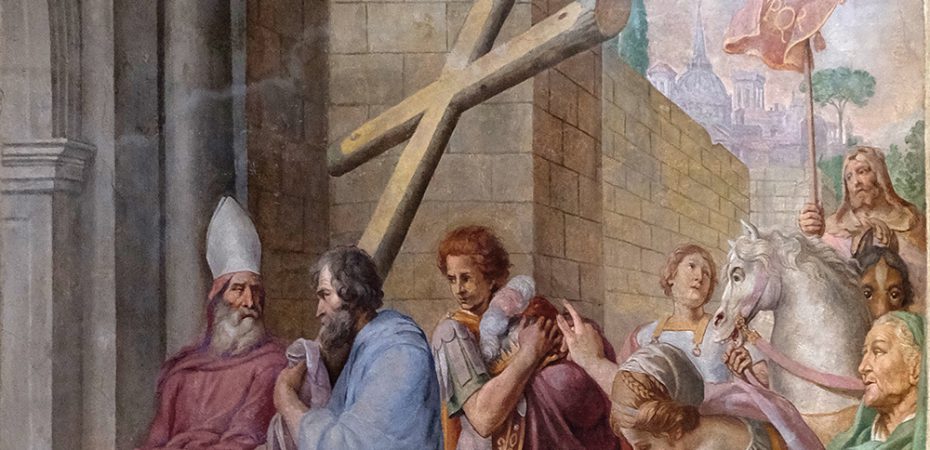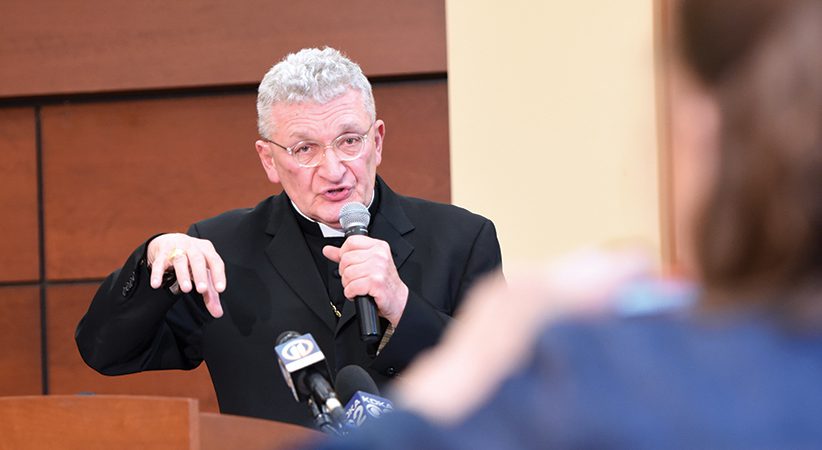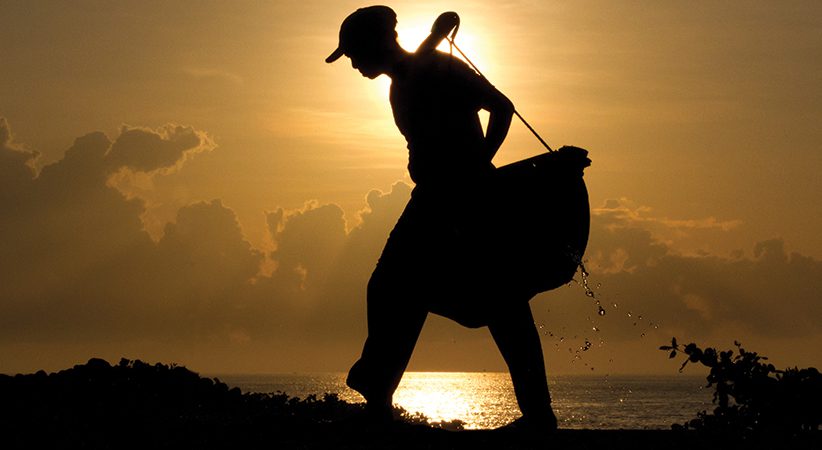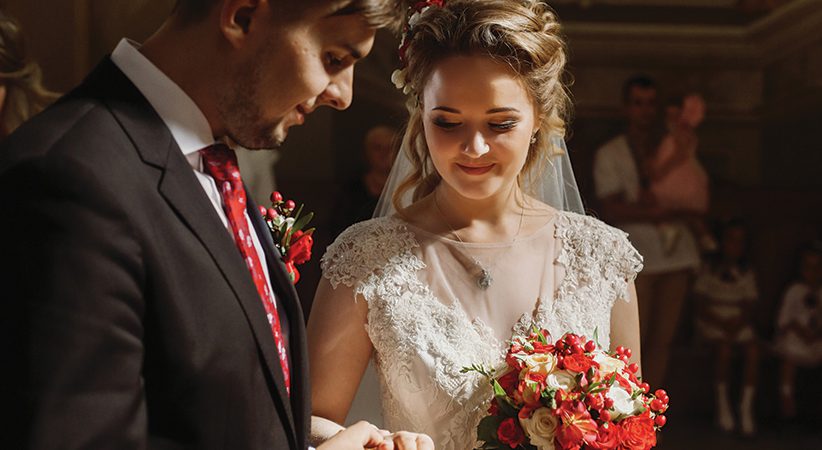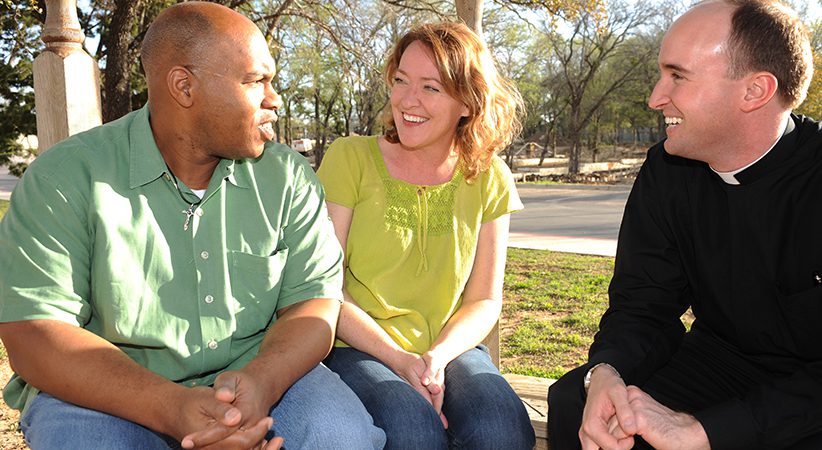Exaltation of the Cross
How the paradoxes of the COVID-19 pandemic relate to several paradoxes of the Cross
Father Paul V. Kollman Comments Off on Exaltation of the Cross
“For our sake he was crucified under Pontius Pilate, he suffered death and was buried … ”
We recite these words from the Nicene Creed when we gather as a Christian assembly on the Lord’s Day, stating the most historically verifiable part of the Gospel story. The specificity of our creedal remembrance names the Roman governor during Jesus’ active ministry as well as the ignominious, humiliating and torturous method by which our Savior died.
September Feasts
As a member of the Congregation of Holy Cross, I belong to a group that has come to raise up that singular moment in human history within our common devotional life, to afford it particular significance. We Holy Cross religious — sisters, brothers and priests — along with many who share our spirituality and mission, observe the feasts of the Triumph of the Cross, Sept. 14, and Our Lady of Sorrows, Sept. 15, with special reverence each year, inspired by our shared heritage.
Of course, these feasts highlighting the Cross of Christ, arising in our liturgical calendar mid-September, coalesce a mystery that all Christians display and revere every time we mark ourselves by the Sign of the Cross, a mystery that also inspires every gathering in memory of him who suffered for us. The shadow of the Cross falls on the Eucharistic word and table, and also across the range of our experiences: on our conviviality and solitude, our work and play, our homes and workplaces, and our cities or countryside. It summons every follower of Christ to such remembrance and reverence.
Defeat Means Victory
In light of 2020’s global experience with the COVID-19 pandemic, we might consider several paired, interrelated and apparently opposite realities for a spirituality of the Cross for those who follow Christ, paradoxes held together in productive tension in the mystery of the Cross of Christ, paradoxes having particular relevance, perhaps, over these past months.
Several are obvious. For example, we have long recognized that Jesus’ agony and apparent defeat meant, actually, his glorification and victory. St. Paul recognized this paradox often in his writings, glorying in the Cross of Christ and wanting to know only Christ crucified.
No doubt, over these past months of the pandemic, you have seen evidence of the Cross of Christ, with plenty of anguish and suffering. I trust you have also seen hope emerging in the shining faithfulness of witnesses with courage and compassion. Easter follows Good Friday, even while the Crucifixion itself was retrospectively deemed glorious. COVID-19 has extracted a terrible toll yet has also disclosed new possibilities. The Cross becomes the Tree of Life.
Personal and Broadly Shared
A second paradox lies in the way Christ’s cross has always been both deeply personal and widely shared, a subject for private devotion and for collective remembrance. Scriptural accounts accept the intensity of Jesus’s own horrifying anguish, and also disaggregate Jesus’ followers, with distinct experiences unfolding for Judas, Peter, Mary Magdalene, the beloved disciple, as well as the centurion and Jesus’ mother, Mary.
Yet all faced a single cross on Calvary’s hill, a tragedy that coalesced all those divergent life stories. On Good Friday we all hear the Passion together, and we revere the Christ individually.
So, too, COVID-19 weaves together the deeply personal and the broadly shared. It has hit each of us distinctively. Some have been pressed into urgent and demanding service, as administrators of organizations facing stress or healthcare providers, while others were made undesirably idle. Some have been sick or lost loved ones, others know (again, as of this writing) few, if any, sufferers from the disease. We discovered new vulnerabilities, heretofore unknown resilience.
Yet all have been affected by this single virus and its swath of destruction, which has touched bodies, minds and hearts among individuals, relationships and communities. Our attention has been drawn to charts and numbers, predictions and assessments, along with plenty of heroism, deflective blame and self-serving posturing.
Unfolding of Events
A final paradox that Christ’s cross presents lies in the pairing of, on the one hand, historical contingency — the apparent random unfolding of events — and on the other hand, the perspective of Divine Providence, in which God’s will always operates.
This instinct to recognize in apparently disordered — and often unwelcome — events a meaningful pattern of divinely guided action represents one of the first ways that Jesus’ followers made sense of their experiences.
………………………………………………………………………………………………………………………………………………………
Divine Providence in the History of the Congregation of Holy Cross
The various congregations of Holy Cross, male and female, trace our heritage, historically speaking, first not to the Cross of Christ per se but to a neighborhood called Sainte Croix near the French city of Le Mans. It was there that our founder, Blessed Basile Antoine Marie Moreau, gathered priests, brothers and sisters to serve the Church of his day. Father Moreau did not initially recognize the way the Cross of Christ marked those women and men he gathered under the name “Holy Cross.” Over time, however, shaped by his own personal experiences — which included ample suffering — he saw the hand of Providence guiding the name for the religious movement that became several religious congregations over time. What began as an accidental label with geographic origins became the center of his, and then of our, spirituality.
………………………………………………………………………………………………………………………………………………………
Indeed, the Crucifixion itself was a foundational example of this process, with the Risen Christ himself challenging the disciples’ initial devastation by his appearances. The conversation on the road to Emmaus in Luke’s Gospel dramatically enacts the relocation of the Cross: from a sign of shame and end of hope into something that could be designated “holy” since it had life-giving, not hope-destroying, meaning.
“Was it not necessary,” Jesus asks Cleopas and his companion, “that the Messiah should suffer these things and enter into his glory?” And he then explains how all had been anticipated beforehand (cf. Lk 24:26-27).
The many speeches in the Acts of the Apostles show early Christian leaders telling the story of Jesus in relation to different trajectories emerging from the Hebrew Scriptures: the various covenants, giving of the law, royal reigns, prophetic figures and their announcements.
Directing Attention to the Cross
As we celebrate these September feasts directing attention to the Cross, let us also embrace the invitation to relocate events and experiences of the past months. In faith, let us take them from the random, meaningless or only tragic to allow them to assume other roles in our lives, personal and collective.
Guided by God’s grace and the inspiration of the Holy Spirit, let us allow them to find their new places in stories that tell of our redemption and participation in God’s remaking of us and the world, even when our hearts tremble at all that has been, and is being, lost. May we increasingly learn openness to seeing in specific moments of life, no matter how painful, pieces of puzzles still emerging, contours of paths we are still walking as grace draws us forward. This is not to revel in suffering. It means being open to the potential for all affliction — even the most painful — to be transformed, in memory and hope, into redemptive suffering.
As the motto of the Holy Cross family has it:
Ave Crux, Spes Unica!
Hail the Cross, our only hope!
FATHER PAUL V. KOLLMAN, CSC, is associate professor in the department of theology at the University of Notre Dame.

